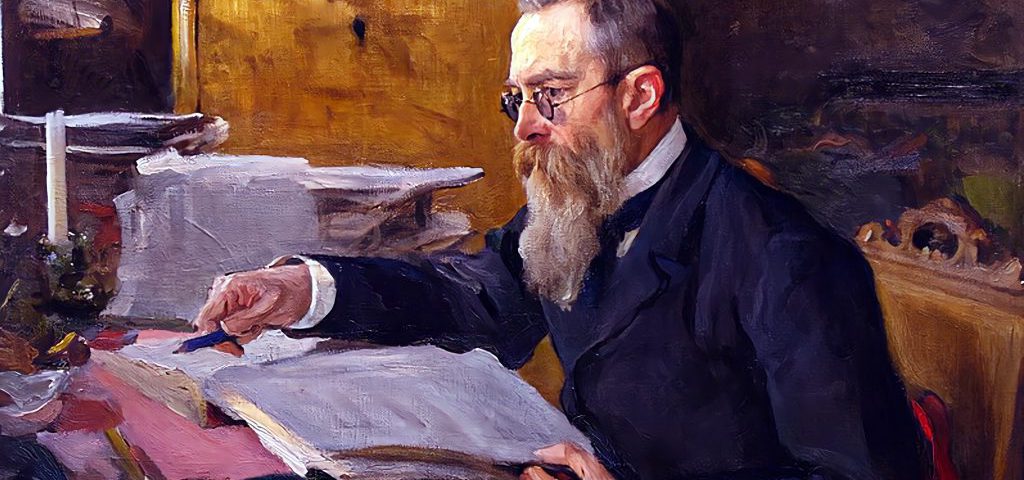Captivating Melodies and Orchestral Brilliance: The Timeless Legacy of Composer Nikolai Rimsky-Korsakov
Nikolai Rimsky-Korsakov, born on March 18, 1844, in Tikhvin, Russia, was a prominent composer, conductor, and member of the influential group known as “The Five.” Renowned for his richly orchestrated and evocative compositions, Rimsky-Korsakov played a significant role in shaping the Russian classical music landscape.
Rimsky-Korsakov’s musical journey began at an early age when he displayed a remarkable talent as a pianist. He later pursued a naval career, serving as an officer in the Russian Navy while continuing his musical studies. Inspired by his encounters with composer Mily Balakirev, Rimsky-Korsakov dedicated himself to composition and emerged as a leading figure in the Russian nationalist movement.
Exploring the Captivating Soundscape of Nikolai Rimsky-Korsakov
One of his most celebrated compositions is the symphonic suite “Scheherazade.” Inspired by the enchanting tales of “One Thousand and One Nights,” Rimsky-Korsakov skillfully weaved a tapestry of exotic melodies and intricate musical narratives. “Scheherazade” showcases his mastery of orchestration with its lush harmonies, virtuosic violin solos, and evocative themes that transport listeners to distant lands.
In addition to “Scheherazade,” Rimsky-Korsakov’s opera “The Tale of Tsar Saltan” stands as a testament to his creative genius. Based on a fairy tale by Aleksandr Pushkin, the opera features a wealth of melodic treasures and showcases the composer’s ability to create memorable characters through music. Furthermore, the famous “Flight of the Bumblebee,” extracted from this opera, has become a popular showpiece known for its lightning-fast passages and technical demands.
Moving beyond the realm of opera, Rimsky-Korsakov’s “Capriccio Espagnol” is another notable work that demonstrates his fascination with colorful orchestration and Spanish musical influences. This spirited composition blends lively rhythms, folk melodies, and virtuosic displays across various orchestral sections, effectively transporting listeners to the vibrant world of Spanish culture.
Additionally, within Rimsky-Korsakov’s diverse body of work, his opera “The Golden Cockerel” stands out for its biting social commentary and the composer’s ability to infuse the music with humor and wit. This opera tackles political corruption and power themes, effectively displaying Rimsky-Korsakov’s mastery of character development and musical storytelling.
Not to be overlooked, his ballet “The Snow Maiden” and symphony “The Antar” also occupy prominent positions within his repertoire. These highly regarded works further demonstrate his melodic inventiveness, lush orchestration, and knack for creating evocative atmospheres.
Beyond the Compositions
Rimsky-Korsakov’s contributions extended beyond composition. He held a teaching position at the Saint Petersburg Conservatory, where he mentored renowned composers such as Igor Stravinsky and Anatoly Lyadov. His pedagogical influence helped shape the future of Russian classical music.
Throughout his career, Rimsky-Korsakov championed innovative orchestration techniques, employing vibrant colors and imaginative instrumentation. His skillful manipulation of musical elements, such as rhythm and tonality, captivated audiences worldwide, solidifying his place as one of Russia’s greatest composers.
The legendary composer died on June 21, 1908, in Lyubensk, Russia (now in Ukraine). He died of angina pectoris, a heart condition, at the age of 64.
The Beauty and Grace of “Capriccio Espagnol” on Stage
Nikolai Rimsky-Korsakov’s enduring legacy lives on through his masterful compositions, profound impact on Russian music, and enduring influence on generations of composers. His ability to transport listeners to distant realms and evoke powerful emotions through his music continues to captivate audiences worldwide.
To listen to one of his most well-known pieces, listen to “Capriccio Espagnol,” which was performed by the La Mirada Symphony on February 19, 2023, at the La Mirada Theatre for the Performing Arts.

